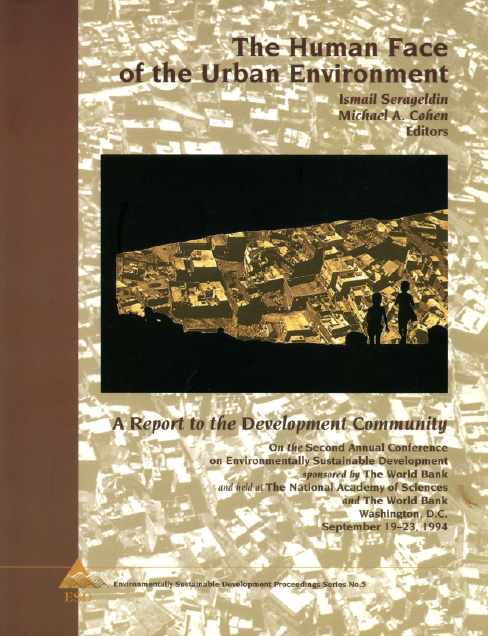The major contribution of the 1992 Rio Earth Summit was to raise global consciousness on environmental issues. That event brought together global, national, and local officials; experts; activists; academics; and concerned citizens to pose many questions about the Earth’s future. Despite its intended comprehensive character, Rio did not sufficiently focus needed attention on the urgent problems facing people living in urban environments. Yet, about half of the world’s population lives in cities, and the Earth is rapidly becoming urbanized. To focus global and national attention on this problem, the Bank convened its Second Annual Conference on Environmentally Sustainable Development, “The Human Face of the Urban Environment,” in September 1994. This was the first global conference to bring together leaders representing four different perspectives – international institutions, national and local governments, and community groups – to examine the current challenges posed by urban environmental problems; to identify models of good practice in environmental management; and to mobilize global, national, and local energies and resources to address these problems. In response to this event the World Bank pledged itself to: (i) expand its urban environmental assistance to its member countries; (ii) assist governments to integrate urban environmental issues into national environmental action plans; (iii) work with national and local governments and nongovernmental organizations to develop indicators for monitoring environmental progress; (iv) work with the Global Environmental Facility to strengthen the linkages between global and urban issues; (v) work with other international institutions to focus attention on these problems; and (vi) carry this message forward to the United Nations’ Habitat II Conference in Istanbul in June 1996.

